- News
- Reviews
- Bikes
- Components
- Bar tape & grips
- Bottom brackets
- Brake & gear cables
- Brake & STI levers
- Brake pads & spares
- Brakes
- Cassettes & freewheels
- Chains
- Chainsets & chainrings
- Derailleurs - front
- Derailleurs - rear
- Forks
- Gear levers & shifters
- Groupsets
- Handlebars & extensions
- Headsets
- Hubs
- Inner tubes
- Pedals
- Quick releases & skewers
- Saddles
- Seatposts
- Stems
- Wheels
- Tyres
- Tubeless valves
- Accessories
- Accessories - misc
- Computer mounts
- Bags
- Bar ends
- Bike bags & cases
- Bottle cages
- Bottles
- Cameras
- Car racks
- Child seats
- Computers
- Glasses
- GPS units
- Helmets
- Lights - front
- Lights - rear
- Lights - sets
- Locks
- Mirrors
- Mudguards
- Racks
- Pumps & CO2 inflators
- Puncture kits
- Reflectives
- Smart watches
- Stands and racks
- Trailers
- Clothing
- Health, fitness and nutrition
- Tools and workshop
- Miscellaneous
- Buyers Guides
- Features
- Forum
- Recommends
- Podcast
 Push on inflator
Push on inflatorHow to use a CO2 inflator — get a tyre inflated in 8 easy steps
CO2 inflators are an extremely convenient way to inflate tyres, if speed of operation is the most important factor. A small metal canister contains compressed carbon dioxide gas that expands to fill your tyre when the top is punctured. It's a quick way to get back on the road, but if you're not careful it's easy to jet all the CO2 into the atmosphere and not the tyre.
Our guide below shows you what we believe is the best method to fit and use a CO2 inflator. If there are other methods that you prefer then feel free to let everybody know in the comments.
Tools and Materials
Using a C02 inflator
Go through your usual tube replacement process, making sure there are no sharp objects left in the tyre and the tube isn't pinched by the tyre. The latter is very important. With a had pump, you might get a chance to see a tube popping out of the tyre and stop it, but when you use a gas canister you'll blow a hole in a pinched tube before you can react.
1 Make sure the valve is open
It's essential to have the valve in the open position. We've seen riders fit a fresh tube in a hurry and hit the CO2 trigger with the valve still closed, and so wasting a cartridge. You can avoid this by storing your spare tubes with the valves open.
2 Clear the valve
Once you've undone the valve, tap the small brass threaded chuck back towards the valve stem. Valves can be quite sticky when new, and while the power of the compressed gas is usually enough to hit the valve open it's still good practice to clear it first.
3 Make sure the inflator is closed
While each CO2 inflator is designed slightly differently, they mostly follow the same functional path. Most will have a switch, dial or trigger to allow you to control the moment of delivery. This version we're using is from Lezyne. It uses a twist dial. It's all the way open or all the way closed. Right now, you need to close the valve fully.
4 Put the cartridge in the inflator
The head unit and the cartridge are both threaded. They screw together. Some inflators allow you to store the cartridge inside a casing, primed and ready to go. You release a safety catch then pull a trigger to let the gas out. You could carry this Lezyne head with the cartridge screwed in too, but there's a slight risk of accidentally opening it.
5 Tighten the cartridge into place
Keep turning the head unit on to the cartridge. Inside the threaded port of the head unit is a small tube with a pointed end. This tube will pierce the end of the CO2 cartridge. You'll sense it in your hands as the gas escapes the confines of the cartridge and expands into the head unit. The valve trigger you closed before you started stops it from flowing out until you're ready.
6 Turn the wheel up
Bring the valve section of the wheel so that it is uppermost. Press the valve port of the head unit onto the valve stem. Make sure it's firmly on. Keep holding it.
7 Unleash the gas
Holding the inflator's head unit onto the valve stem, open the flow of gas from the inflator cartridge to the inner tube by operating the inflator's trigger, dial or button. The inflation will be very sudden, a bit noisy and it'll make the gas cartridge extremely cold; cold enough to burn skin, so wear gloves or, as we've done, take great care not to touch it.
8 Remove the inflator
When the tyre inflates you should hear the tyre beads pop to the rim signifying that the tyre has seated. It'll make a resounding snap sound. Next close the valve on the gas cartridge. Most allow you store unused gas in the cartridge. In most cases we use all the gas to ensure tyre seating. Pull the inflator off the inner tube valve and adjust to your favoured pressure, then close the inner tube valve.
Latest Comments
- cmedred 22 sec ago
So whatever happened to the old idea of slowing down, giving a lot of space, and being prepared to stop if necessary when encountering a child...
- KDee 24 min 32 sec ago
I'm still running an ELMNT BOLT V1, and I've never really understood the LED's. I'm sure I configured them for HR zones, but never really look at...
- don simon fbpe 26 min 38 sec ago
This is a late April Fool's, isn't it?
- chrisonabike 26 min 47 sec ago
Mostly agree. Although ... high level sport is complicated. It's not wrestling exactly, but there sometimes seems to be more than a little...
- Hirsute 1 hour 27 min ago
It would have been better to buy 1 lock for £200 or rather 250 for a hiplock or litelok.
- David9694 1 hour 31 min ago
It just seems a lot of trouble to go, doesn't it. If you are into building stuff like this perhaps some system where the vehicle brings you to...
- don simon fbpe 1 hour 49 min ago
Why is this not the will of god?
- hawkinspeter 4 hours 53 min ago
PKD foresaw it, though his novel was based on a different outcome of WWII, not the precursor to WWIII. Maybe the Idiocracy film is a closer fit?
- OnYerBike 6 hours 55 min ago
@Sredlums: I'm not sure I follow your logic. If someone grabs your helmet twists it, then the reason it doesn't feel good is because the outer is...
- Rapha Nadal 6 hours 55 min ago
Coming to the mid-paced Saturday club ride soon.
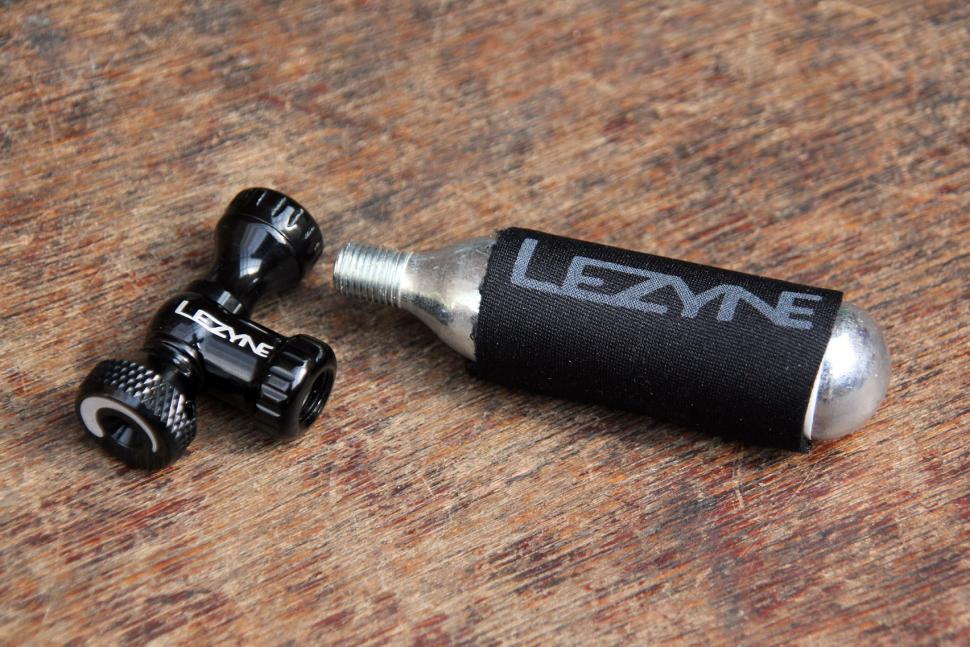
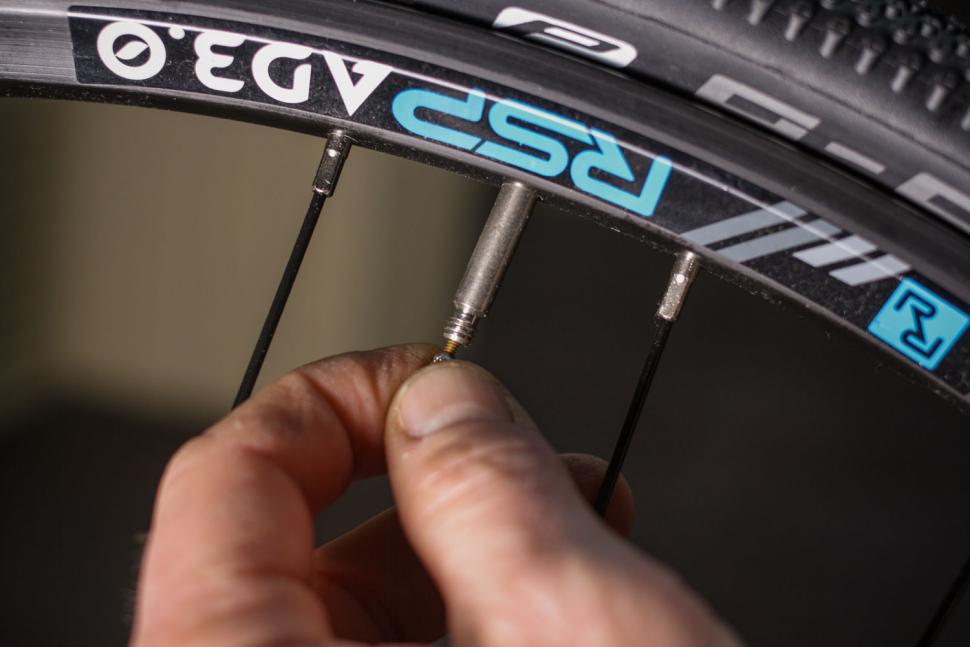
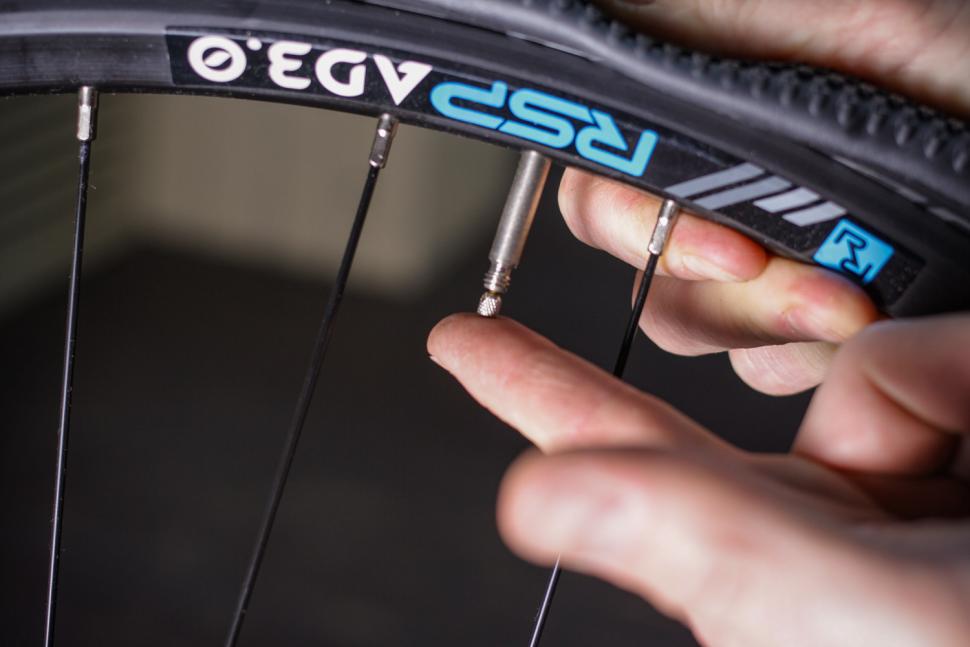
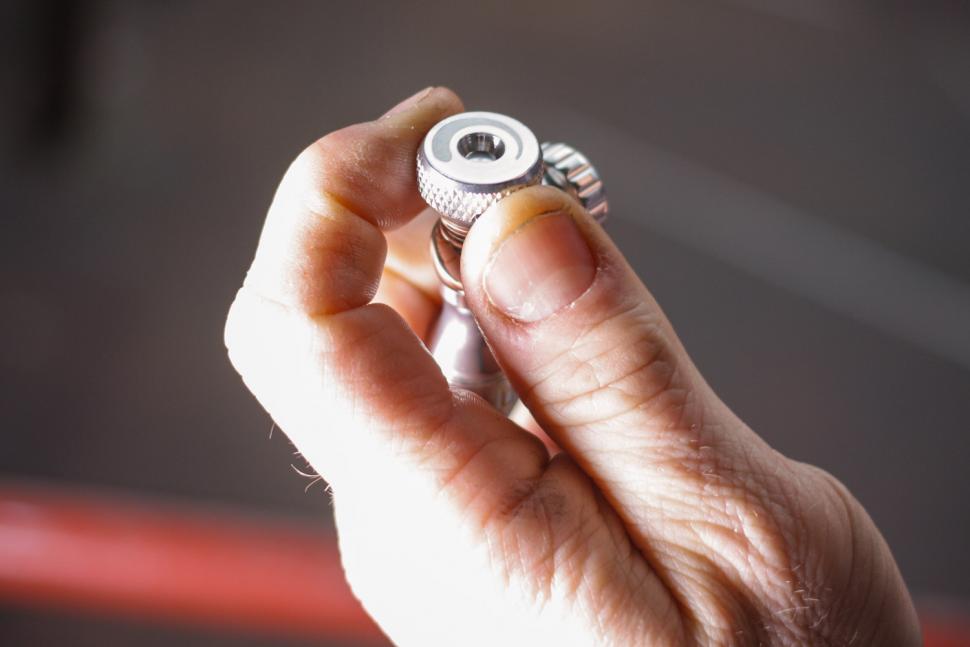

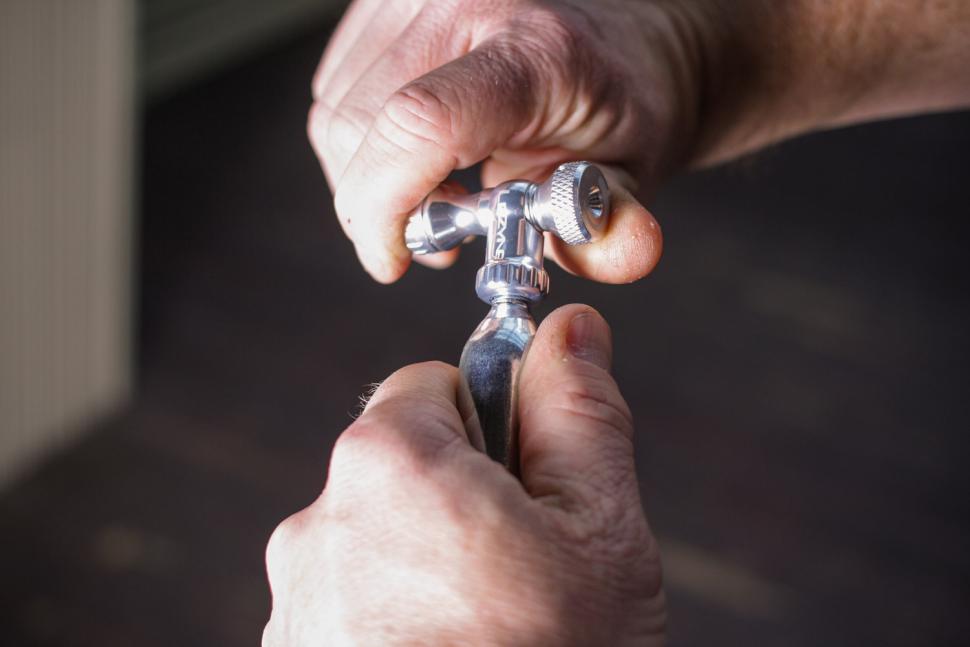

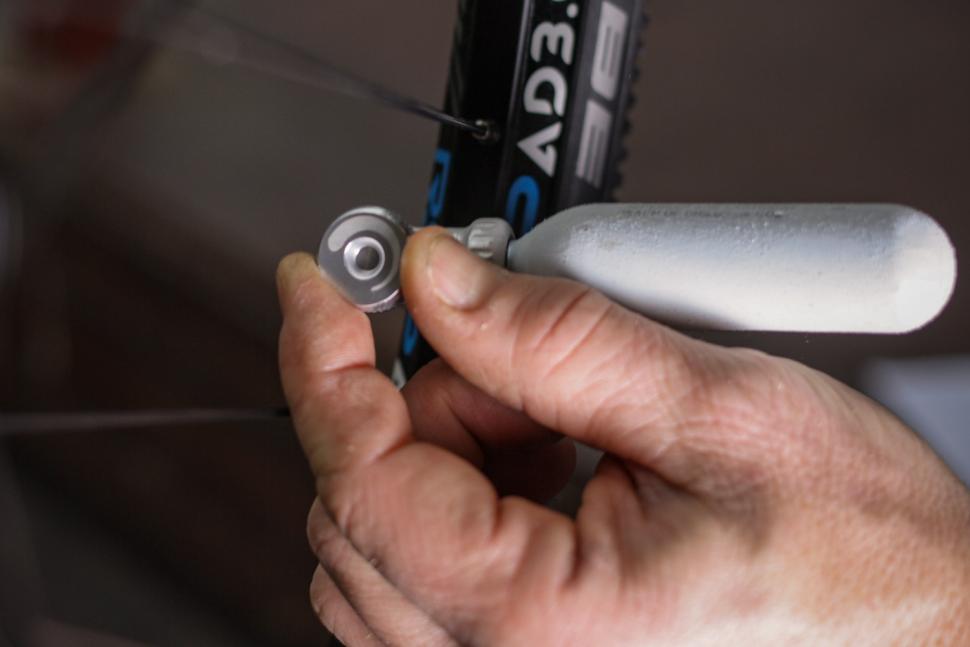
Add new comment
30 comments
Punctures are pretty rare these days with modern tyres (if cared for properly). But, how many canisters should one take for piece of mind?? I once had FOUR flats on a long winter ride (admittedly one as a result of pinching a tube on refitting). Should I take five canisters for piece of mind or just a good lightweight pump which provides endless air (and would be lighter)?
CO2 has its uses e.g. in fast group rides where you don't want to hold people up, and I might be tempted to carry CO2 too for commuting in case I'm cutting things fine (but still carry a pump too). But IMHO, if I'm riding alone I'd never leave home without a good pump. On a solo ride, the extra 2 mins needed to reinflate with a pump is not usually important...
Or...save your money, save the planet and just buy a decent pump.
As to why the co2 leaks out more quickly than air, carbon molecules are smaller than oxegen molecules, an innertube or tubless tyre are not completely 'air-tight', but instead have minute perforations which the smaller molecules can dissipate through. It is the reason perfectly good tubes and tyres gradually get soft or deflate! read the full explanation at this link, https://www.bikeforums.net/3032510-post36.html
As to the good or bad on co2 inflators, read the rules, and if you must carry a pump it must go in your pocket!
Keep on pedaling
Carbon molecules? You filling your tubes with coal? I was wondering about this and came a big unstuck because carbon is atomic mass 6 and oxygen is atomic mass 8, so at first glance you're comparing co2 with mass 22 (in before the chemists tell me the mass isn't that simple to calculate in a compound) and o2 with mass 16, so the oxygen should get out faster. In any case air is mostly nitrogen and n2 would mass 14, so should slip out even easier. It must be something to do with the size or shape of the molecules.
I was wondering about this and came a big unstuck because carbon is atomic mass 6 and oxygen is atomic mass 8, so at first glance you're comparing co2 with mass 22 (in before the chemists tell me the mass isn't that simple to calculate in a compound) and o2 with mass 16, so the oxygen should get out faster. In any case air is mostly nitrogen and n2 would mass 14, so should slip out even easier. It must be something to do with the size or shape of the molecules.
<p>[quote=DugZz]</p>
<p>As to why the co2 leaks out more quickly than air, carbon molecules are smaller than oxegen molecules, an innertube or tubless tyre are not completely 'air-tight', but instead have minute perforations which the smaller molecules can dissipate through. It is the reason perfectly good tubes and tyres gradually get soft or deflate! read the full explanation at this link, https://www.bikeforums.net/3032510-post36.html</p>
<p>As to the good or bad on co2 inflators, read the rules, and if you must carry a pump it must go in your pocket!</p>
<p>Keep on pedaling</p>
<p>[/quote]</p>
It's not molecular carbon, molecular carbon does not exist in room temperature as a gas. For carbon at room temperature, look at diamond or graphite.
CO2 is bigger than O2 and N2 molecules (the form of the two main constituents of air) so that does not help with diffusion through pores in an inner tube. Chemical permeability, as described in the link you posted, is out of my knowledge though.
ahh no... its not carbon molecules but carbon dioxide molecules, either way these are actually bigger than oxygen molecules (two oxygen atoms and one carbon atom joined together is bigger than two oxygen atoms joined together - oxygen is a diatomic molecule). As the article correctly states, it's how the carbon dioxide molecules interact (not react) with the butyl (rubber) molecules which allows them to move through the butyl easier than oxygen or nitrogen (both of which together make up 99% of the composition of air). In a normally inflated tyre with air, carbon dioxide is a very small percentage of the volume (about 0.04%). When you use a CO2 inflator it now becomes 99-100% of the volume - hence the tube goes down in a day or two.
At the risk of seeming fanatical...I'm beginning to think that there are some massive blind spots about the environment in what is generally thought of as an environmentally-friendly activity - riding a bike. And the use of disposable CO2 canisters instead of a pump is one of those blind spots. Beyond that, most of my bikes have been bought second-hand and keep going for years, but it seems as if there's a shift towards a culture of conspicuous consumption and disposal in the bike world. How environmentally-friendly is a non-repairable, landfill-bound carbon frame compared to a steel frame, for example?
Carbon frames are completely repairable with a lot of small firms able to repair them as good as new.
Old fashioned lugged and brazed steel frames, and fillet-brazed frames? Also repairable as good as new.
Modern super high strength steel however... especially welded frames, aluminium and titanium frames? Forget it. You can't unweld the joints to put in a new frame member.
Looking into the tubeless thing and it would appear that some sealants react badly to CO2 compared to air. Or at least there are some claims of this.
Just use a good pump. A reliable, inexhaustible supply of air. How many seconds does using a canister save you? Did you win the TDF as a result?
Convenient to carry? Maybe, although mini pumps are very small too.
When a fellow rider punctures and they only have a mini-pump, ensure you wait until they have exhausted themselves getting it up to 100psi before going "oh, silly me, I forgot I had these Co2's, you could have used one". Works really well on a cold and wet day.
Or, when a fellow rider punctures and they only have CO2, wait while they break the connection, or can't make it work, or waste half the CO2, and then offer them the mini pump to do it right, simply and easily. What's a bit of elbow grease?!
I have seen cold CO2 freezing ice around core of the valve so that valve does not close shut and lets air to escape deflating tire. Solution is not to remove CO2 pump immediately.
Saw a foam sleeve was availabe from the place where I buy my cartridges but didn't want to pat the £2 they wanted to used a 25c tube to cover the cartridge. Can be a little tight but a little lube and they soon slide on.
When I fit a new tube out on the road, I go round the tyre pinching it before inflating with a cartridge. Never failed me yet.
Silly question, but is there a good technique for easily disconnecting the frozen inflator head from the valve? as the couple of times of used mine it's seemed more awkward and fiddly than it should be.
Often if there is some moisture it will have frozen around the chuck head. I warm it with my hand round it and that can make them easier to remove. Also, of course, unthreaded inner tubes are easier to get off than threaded ones.
double post.
IMHO a pump with a canister cover is totally unnecessary bulk.
Cover your canisters with a short section of old inner tube and you won't freeze your hands.
I use the Lezyne Alloy Drive which you store your co2 canister inside, hardly any bulkier than carrying the canisters seperatly and less likely to lose the small inflator part.
I have that Alloy Drive too. Really isn't any additional bulk. Keeps it all tidy too.
Also use a pump that covers the cannister so you dont get a cold burn from it. I have one similar to the "genuine innovations" that Road.cc reviewed previously.
Another important point: when you get home, deflate your tyre and pump back up with regular air. CO2 escapes from the tube much faster than normal air, meaning you'll wake up to a flat tyre the next morning.
Really? I've never had that problem.
I agree about putting a bit of shape in the new tube with a mini-pump before fitting it, and before using the CO2.
Actually it takes a few days (not overnight). CO2 escapes through the butyl rubber much easier than air.
I agree with the statement about letting the tyre down and putting air in when you get back home. I've found a CO2 inflated tube flat the next morning a couple of times. Each time I assumed the replacement tube must have a hole but a check under water proved it to be fine. Does anybody know why CO2 goes through a tube faster than air?
store your spares with the valve open? seems like an ideal way of bending the valve shaft. I generally store my spares exactly as they come out of the box.
I'm pretty sure my infklator and cinisters advised fully discharging following once the canister seak has broken..
Also I always carry a mini pump as well since the time when i had a slow puncture and couldn't get home with a CO2 canister, but a hand pump would have done the job.
Also i have always found the best way to install a tube so as not to pinch it under the valve, is to put enough air into it to make it fully round, and then it will sit in the outside of the tyre as you put the tyre bead back on. Then just push the valve body through the hole to check the tube isn't pinched at the valve location and all good. Putting a tube in flat and then hoping it isn't pinched before whacking the CO2 canister on seems a bit high risk to me. Especially as the CO2 they sell in the local halfords (which is often the nearest place I can find for tubes in an emergency) does not have a threaded neck.
Was SO excited the first time I had a puncture with a CO2 inflator in my kit.. that I filled up with tube without putting the second bead of the tyre back on.
Had to deinflate, put the bead on, and pump manually.
Tragic. Must be the only guy in the world to have ever done anything so stupid.
9. Put the empty cartridge in your pocket and take it home to dispose of.
Many of the problems in the article could be avoided by partially-inflating the tube with a mini-pump first (e.g. unsticking the valve, remembering to open it, checking if the tube is popping out under the bead). I still carry my pump as well as CO2 because I find it easier to fit a tube with a bit of air in it. Also means you'll get home if, goodness forbid, you run out of CO2 pods!
I have found the greatest problem with CO2 inflators is that they inflate the tube too quickly. This increases the chance of the tube being trapped under the bead and blowing - normally immediately. Very similar to a snake bite.
I have found the best technique to avoid this is to inflate the tube slightly* (just so that the tube expands to fill the tyre) and then check all around (and on both sides) that no tube is pinched by the bead. If there is a bit of the tube caught, it is then easy to just roll it under the bead into the tyre, then inflate fully...
*on the 'press' type inflators (as illustrated in the article) this can be done by lightly pressing the inflator so that just a little gas escapes into the tube. With a 'tap' type inflator, just open the tap a little.